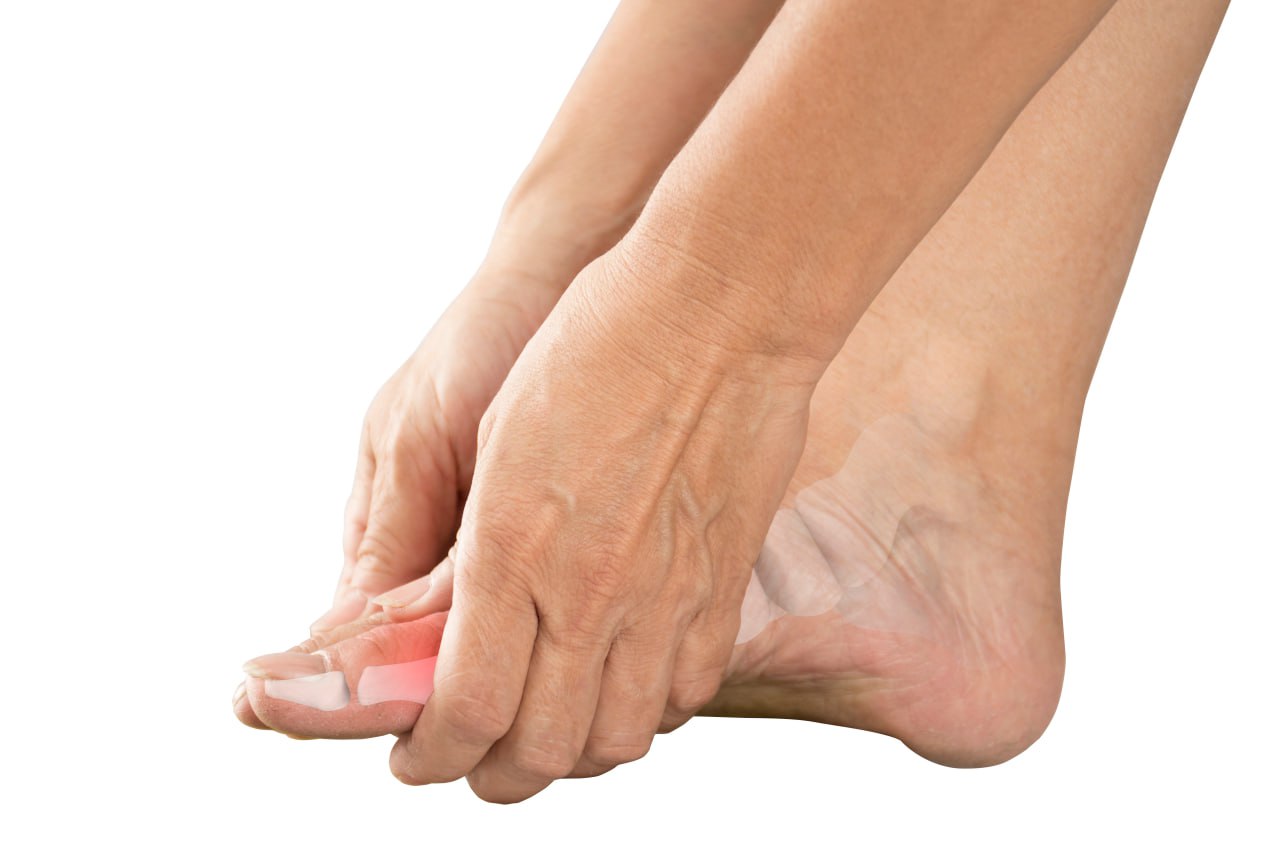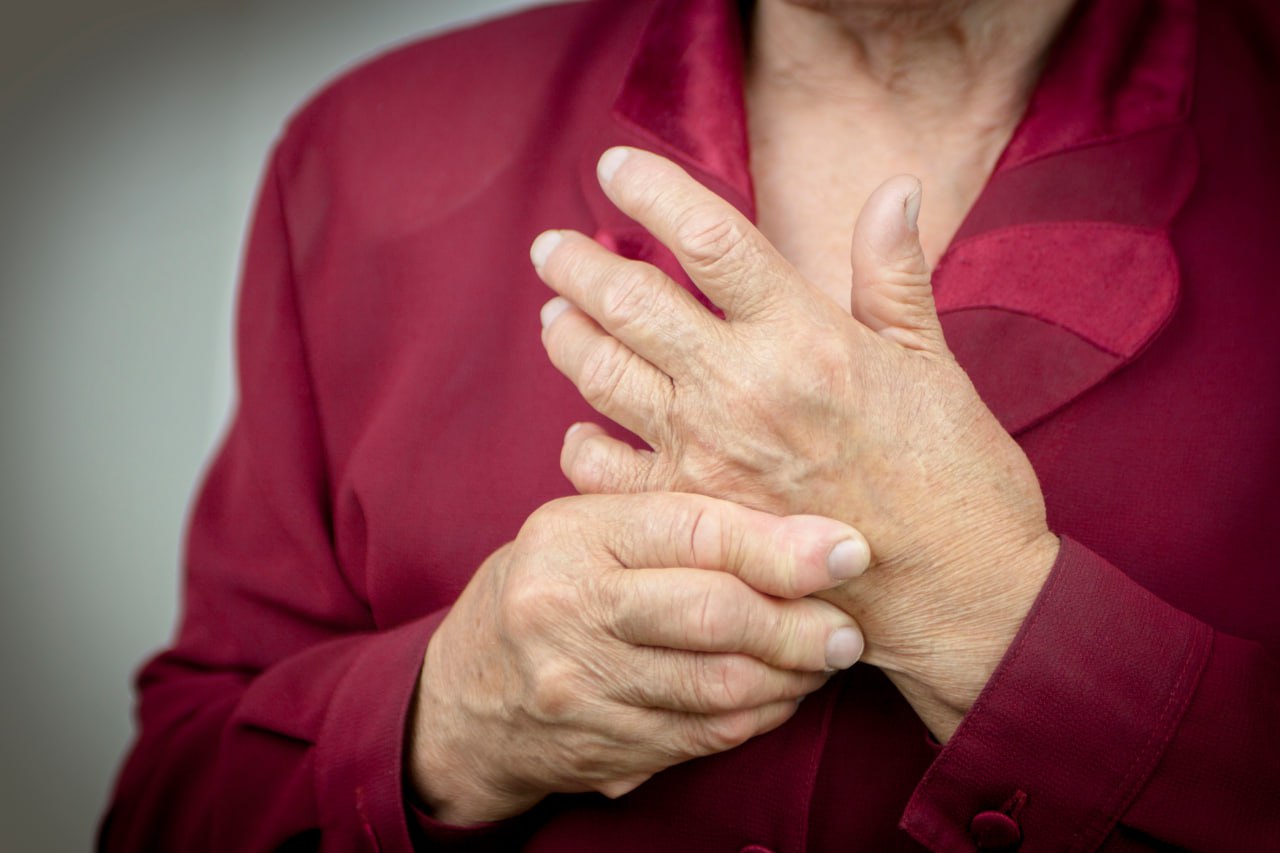A warm joint occurs when the temperature of your joint is warmer than usual. This can feel like a heat sensation coming from the joint itself, which is often accompanied by swelling, redness, and pain. It could be a sign of an underlying infection if you’re experiencing other symptoms in addition to the warm joint, such as fever or chills.
Whatever the accompanying symptoms are, you should get an official diagnosis from a doctor to determine if you have an underlying medical issue, such as gout, and obtain the appropriate treatment.
Why Are My Joints Warm?
Warm joints can happen in any joint, but it’s most often seen in larger joints like your knees, hips, and shoulders. The most common causes of a warm joint include:
- Inflammation: Inflammation occurs when your body’s immune system responds to an injury or infection in the area by increasing blood flow to the joint. This can cause heat, swelling, and pain in the joint. Inflammation can develop anywhere in the body.
- Infection: Joint infections can be caused by bacteria, fungi, or viruses. These infections can generate heat and swelling in the joint as well as a fever. If you suspect an infection in your joint, you should seek medical attention immediately. If left untreated, joint infections can cause severe complications and even damage the joint.
- Injury: Sprains, strains, or fractures can also cause a warm joint. In these cases, the heat is caused by increased blood flow to the area in response to the injury.
Possible Medical Conditions Associated With Warm Joints
There are a number of underlying medical conditions that can lead to warm joints. Some of these conditions include:
- Gout: Gout is a form of arthritis. It’s caused by an accumulation of uric acid in the joints. Gout can cause intense pain, inflammation, and warmth in the affected joint. Although gout tends to start in the big toe, it does affect other joints as well, such as the ankles, wrists, elbows, knees, and fingers.
- Rheumatoid Arthritis: Rheumatoid arthritis is an autoimmune disorder. It causes joint inflammation and pain by attacking the lining of the joints, thereby causing swelling, redness, heat, and stiffness. It usually starts with small joints like those in your hands and feet but can eventually affect larger ones such as the hips or knees.
- Osteoarthritis: Osteoarthritis is a degenerative joint disorder resulting from the breakdown of the cartilage that cushions the bones in your joints. This can lead to inflammation, pain, swelling, and warmth in the affected area.
- Systemic Lupus Erythematosus: This type of lupus is an autoimmune disorder and is the most common form of lupus. It affects almost every part of the body, including the skin, joints, blood cells, kidneys, lungs, heart, and brain.
The condition causes the body’s immune system to attack its own tissues, resulting in joint pain, warmth, swelling, and stiffness in the affected area.
- Ankylosing Spondylitis: Ankylosing spondylitis is an inflammatory disorder of the spine. It can cause inflammation, stiffness, and pain in the spine as well as warmth in the affected area.
- Bursitis: Bursitis is an inflammation of the bursae. The bursae are small sacs of fluid that cushion and lubricate your joints. This can happen due to constant pressure or trauma to the area, leading to warmth and swelling in the joint.
- Tendonitis: Tendonitis is often an injury and inflammation to the tendon. Those with tendonitis have reported having warm or hot knees, wrists, and more.
When Are Warm Joints Abnormal?
If you’re not experiencing any other symptoms, and the warmth in your joint is just a sudden occurrence that goes away and doesn’t return, it may be nothing to be concerned about. However, if you experience any additional symptoms, seeking medical attention right away is critical.
Even if you don’t experience any other symptoms, speaking with a medical professional can help rule out any potential underlying issues. With that in mind, some of the signs that indicate your warm joints aren’t normal include:
- Broken areas of skin: A broken area of skin, such as a cut or abrasion, can indicate that you experienced an injury to the joint.
- Chills: Chills can be a sign of infection and often accompany other symptoms such as fever and fatigue.
- Fast onset of joint pain: If you experience a sudden, sharp pain in your joint accompanied by heat and swelling, this could indicate a serious condition such as arthritis or bursitis.
- Fever: Fever is a telltale sign that your body is fighting off an infection, and it’s often accompanied by other symptoms such as fatigue, chills, and loss of appetite.
- Intense pain: Severe pain in a joint can indicate a serious underlying condition, such as an infection or arthritis. It could also indicate a serious injury, such as a fracture or dislocation.
- Sudden joint immobility: If you suddenly experience a decreased range of motion or difficulty moving your joint, it could be due to an underlying issue such as arthritis.
Diagnosing The Underlying Causes
If you seek medical treatment for your warm joint, the first thing a doctor will do is request a medical history. They may be able to diagnose the underlying cause of your warm joint based on your symptoms and medical history. The doctor will also require a physical examination of the joint in question.
A physical exam is an essential part of diagnosing the underlying cause of warmth in a joint. During this exam, your doctor will assess the affected joint for swelling, redness, tenderness, heat, and range of motion. Finally, they will likely order the following to confirm their diagnosis or rule out potential underlying conditions:
- X-Ray or MRI: These imaging tests provide a detailed look at the joint and can help identify fractures, tumors, or other issues.
- Joint Analysis: Joint analysis involves taking a sample of the fluid from your joint and analyzing it to check for infections or other problems.
Conventional Medicine For Treating Warm Joints
If you go to a traditional doctor, such as a primary care physician, there are a few conventional treatment options that they may recommend to treat your warm joints. These include:
Cold Therapy
Cold therapy, also known as cryotherapy, involves applying cold packs to the affected area. This helps reduce inflammation and swelling in the joint and can relieve pain and discomfort. It can also help counteract the warmth in the joint.
Medications
Traditional doctors often prescribe medications to reduce inflammation and pain in the joint. Some of these prescribed medications may include non-steroidal anti-inflammatory drugs (NSAIDs) and corticosteroids. Such medications can provide temporary relief from certain symptoms, such as inflammation and pain.
However, they won’t help treat the underlying cause. It’s also important to note that some medications can cause side effects and may be habit-forming, which is why we avoid their use.
Joint Protection
A traditional doctor may suggest using assistive devices such as splints or braces for joint protection. These can help reduce stress on the affected joint, thereby helping to minimize pain and inflammation. Additionally, a splint or brace can help prevent further injury to the affected area by providing support and stability.
Neuragenex NFPM For Pain Caused By Unusual Joint Warmth
We use a Neuragenex Neurofunctional Pain Management approach to treat chronic pain, including pain caused by unusual joint warmth. Unlike more conventional medical treatments, our whole-person approach focuses on addressing the underlying cause of pain as opposed to masking the symptoms.
For example, if you’re experiencing pain and joint warmth as a result of gout, then we will recommend a combination of drug-free and non-invasive solutions that directly target the root causes of gout instead of just treating its symptoms. Our treatment modalities include the following:
Electroanalgesia
Electroanalgesia is a pain management technique that uses high-pulse electrical current to ease pain, boost blood circulation, improve mobility, and induce...
IV Therapy
IV nutritional therapy, or intravenous therapy, involves administering vital nutrients directly to the bloodstream through an IV. This type of treatment bypasses the digestive system, allowing for maximum absorption and utilization of nutrients by the...
Lifestyle Counseling
Lifestyle counseling is an approach to managing chronic pain that involves identifying, assessing, and modifying lifestyle factors contributing to an individual's pain. For example, lifestyle factors such as nutrition, physical activity, stress, sleep quality...
Warmth Joint Pain-Causing Conditions We Treat
Neuragenex Neurofunctional Pain Management is designed to treat various conditions that cause chronic pain, including these warmth joint pain-causing conditions:

Gout Pain Treatment
Gout is a painful condition that can cause severe joint inflammation and swelling. It can lead to chronic pain and mobility issues that can have an enormous impact on your quality of life. Fortunately, the Neuragenex Neurofunctional Pain Management protocol...

Rheumatoid Arthritis Pain Treatment
Rheumatoid arthritis can be a debilitating and painful condition that causes swelling, joint damage, and immobility. We offer a non-invasive, non-chiropractic solution to alleviate the pain associated with rheumatoid arthritis. Our treatments are designed to...

Osteoarthritis Pain Treatment
Osteoarthritis is often linked to joint pain. But the impact that this condition has on your life is of much greater magnitude. If you have osteoarthritis, the chances are that you experience a pain so intense that it prevents you from climbing stairs,...
Boost Joint Vitality And Live A Pain-Free Life
In many cases, warmth in a joint can be indicative of an underlying issue that has to be addressed. While conventional treatments may provide temporary relief from symptoms, they don’t always treat the underlying cause. That’s why seeking comprehensive care for chronic warmth joint pain is so important.
We utilize a Neuragenex Neurofunctional Pain Management approach to treat the root causes of joint warmth pain without surgery or opioids. Our experienced team will develop an individualized treatment plan tailored specifically to your needs to get you back on the path to optimal health and vitality.
Want to find relief for your warm joints? Talk to us.




